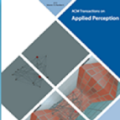Children learn word meanings by tapping into the commonalities across different situations in which words are used and overcome the high level of uncertainty involved in early word learning experiences. We propose a modeling framework to investigate the role of mutual exclusivity bias - asserting one-to-one mappings between words and their meanings - in reducing uncertainty in word learning. In a set of computational studies, we show that to successfully learn word meanings in the face of uncertainty, a learner needs to use two types of competition: words competing for association to a referent when learning from an observation and referents competing for a word when the word is used. Our work highlights the importance of an algorithmic-level analysis to shed light on the utility of different mechanisms that can implement the same computational-level theory.
翻译:通过利用不同情况下使用语言的共性,并克服早期单词学习经历中的高度不确定性,儿童可以学习字义的含义。我们提议了一个示范框架,以调查相互排他性偏见的作用,在单词学习及其含义之间进行一对一的绘图,以减少字词学习的不确定性。在一系列计算研究中,我们表明,在面对不确定性的情况下,要成功地学习字义的含义,学习者需要使用两种竞争:在从使用词的观察者和参考者中学习与使用词词词相对应时竞相向参考的词句。我们的工作强调了进行算法层面分析的重要性,以阐明能够实施同一计算层面理论的不同机制的效用。



